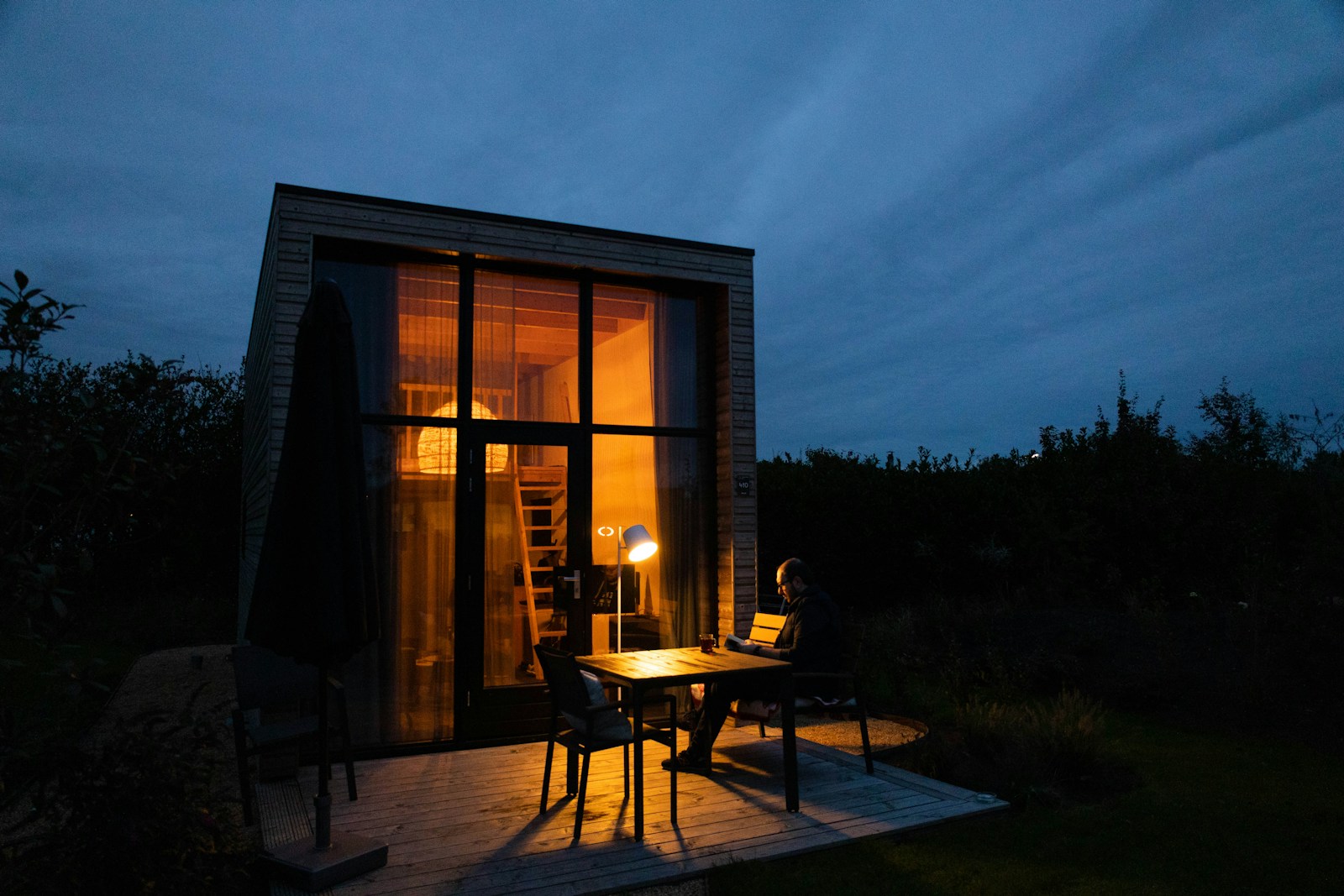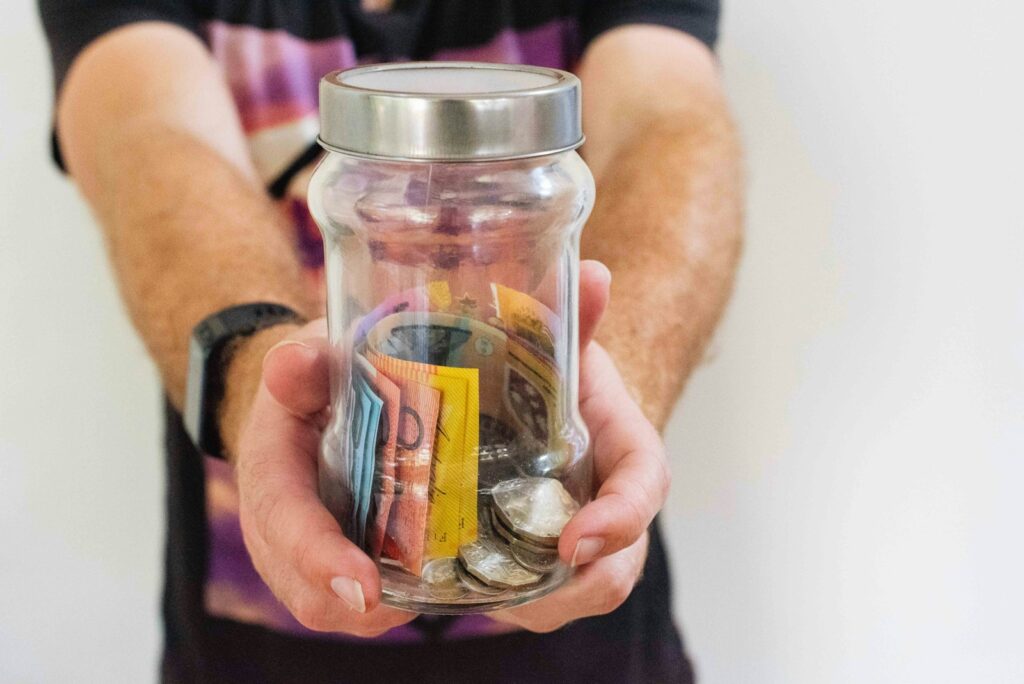Tiny houses are all about smart design, and that includes making the most of your outdoor area. You can double your living space by creating a well-planned outdoor area for your tiny house. It’s like adding an extra room without the hefty price tag or building hassle.
Imagine sipping your morning cuppa on a cosy deck, or having a barbie with your mates in your own little slice of paradise. With a bit of creativity, you can turn even the smallest outdoor space into a ripper hangout spot. From compact veggie gardens to fold-away furniture, there are heaps of ways to make your tiny house outdoor area both practical and inviting.
Essentials of Tiny House Living Outdoors
Living outdoors in a tiny house is a ripper way to enjoy the Aussie lifestyle. You’ll need to pick the right spot, plan for our unique climate, and make the most of your limited space.
Selecting the Perfect Spot
When you’re looking for the ideal location for your tiny house, think about access to utilities and natural features. You’ll want a flat bit of land with good drainage to avoid getting bogged down in the wet season. Check local council regulations to make sure you’re allowed to park your tiny home there.
Sarah, co-founder of Hauslein Tiny House Co recommends that you “look for spots with nice views and some shade from gum trees. A north-facing aspect is tops for catching the sun. Make sure you’ve got enough room for any outdoor living areas you want to add.”
Don’t forget to think about privacy from neighbours and protection from strong winds. A bit of shelter can make a big difference to your comfort.
Designing for the Aussie Climate
Our climate can be pretty harsh, so you’ll need to design your outdoor space to cope. A good verandah or pergola is a must to give you shade in summer and shelter from rain.
Use tough, weather-resistant materials like hardwoods or steel for any outdoor structures. They’ll stand up better to our sun and storms.
Think about ways to catch the breeze in summer:
- Louvred windows
- Outdoor fans
- Strategic planting for shade
For winter, add some outdoor heating options like a fire pit or patio heater. Don’t forget insect screens to keep the mozzies out!
Maximising Outdoor Space
With a tiny house, your outdoor area becomes an extension of your living space. Design with your lifestyle in mind. A compact outdoor kitchen or BBQ area can be great for entertaining.
Use vertical space for gardens – try hanging planters or wall-mounted herb gardens. Foldable or multi-use furniture is brilliant for saving space when not in use.
Create different zones in your outdoor area:
- Dining spot
- Relaxation nook
- Work or hobby space
Smart storage solutions are key. Built-in benches with storage underneath or weatherproof outdoor cabinets can help keep your space tidy.
Don’t forget about lighting for night-time use. Solar-powered options are eco-friendly and perfect for off-grid living.
Setting Up Your Outdoor Sanctuary
Creating a comfy outdoor space for your tiny house is a ripper idea. You’ll love having a spot to relax and enjoy nature right outside your door.
Sustainable Energy Solutions
Want to power your outdoor area without hurting the planet? Solar panels are a top choice for tiny houses. Chuck a few on your roof or set up a small ground-mounted system. They’ll give you free power for lights, gadgets, and maybe even a mini fridge.
Wind turbines can work well too, especially if you live somewhere breezy. Small vertical axis turbines don’t take up much room and can spin in any wind direction.
Soft, warm lights can make your outdoor space feel cozy at night. Try solar-powered fairy lights or LED lanterns. They’re cheap to run and easy to move around.
For cooking, a small solar oven lets you whip up a feed without using any fuel. Or go for a rocket stove that burns twigs and branches super efficiently.
Water Collection and Waste Management
Catching rainwater is a smart way to water your plants and wash stuff outdoors. Set up gutters on your tiny house roof and connect them to a water tank. Even a small tank can collect heaps of water during a good downpour.
Greywater systems can give your outdoor plants a drink using water from your sink or shower. Just make sure you use eco-friendly soaps so you don’t hurt your greenery.
For the dunny situation, a composting toilet is brilliant for tiny houses. It doesn’t need water and turns your waste into garden fertilizer. Just remember to follow the rules about where you can use it.
Proper drainage around your tiny house is crucial. Make sure the ground slopes away from your home to keep water out during heavy rain.
Outdoor Living Tips and Tricks
Make the most of your tiny house outdoor space with these ripper ideas. You’ll love how these tips transform your yard into a bonza spot for relaxing and entertaining.
Multipurpose Furniture Ideas
G’day, mate! Let’s talk about clever furniture for your outdoor area. Think folding tables and chairs that tuck away when not in use. A storage bench is a beauty – it gives you a comfy seat and keeps your gear out of sight.
Look for stackable stools that double as side tables. Pop a cushion on top, and you’ve got extra seating in a jiffy. Don’t forget about hanging furniture like swing chairs or hammocks. They’re tops for saving floor space and adding a bit of fun.
For your barbie area, grab a trolley with wheels. It can hold your snags and drinks, then roll away when you’re done. Smart, eh?
Native Plants for Your Garden
Nothing beats Aussie natives for your tiny house garden. They’re tough as nails and don’t need much water – perfect for our dry climate.
Try these beauties:
- Bottlebrush: Bright red flowers that attract birds
- Kangaroo Paw: Unique flowers in red, yellow, or green
- Banksia: Striking flowers and great for native wildlife
- Grevillea: Comes in loads of sizes and colours
Plant them in pots or raised beds to save space. Use vertical gardening tricks like wall planters or hanging baskets. You’ll have a ripper garden in no time!
Keeping Bugs at Bay the Natural Way
Don’t let mozzies and flies ruin your outdoor fun. Try these natural tricks to keep the buggers away:
- Plant citronella grass, lavender, or lemon balm around your seating area.
- Set up a fan – bugs hate moving air.
- Use essential oils like eucalyptus or tea tree in a diffuser.
Make your own mozzie spray with witch hazel and essential oils. It’s cheap as chips and works a treat!
For flies, hang up some shiny objects like old CDs. The reflections confuse them. Or try a natural fly trap with apple cider vinegar and dish soap.
With these tips, you’ll be able to enjoy your outdoor space without getting eaten alive!
The Legal Side of Tiny Houses in Australia
Tiny houses in Australia face unique legal challenges. You’ll need to navigate council rules and ensure your tiny home meets safety standards.
Council Regulations to Consider
When setting up your tiny house, you’ll need to check local council rules. Tiny houses can be legal in Australia, but rules vary by area. Some councils let you park a tiny house on land for up to 60 days a year without approval.
If you’re keen on a permanent spot, you’ll need to look into zoning laws. These laws decide where you can put your tiny house. Each council has different rules, so it’s best to chat with them directly.
Size matters too. Your tiny house must be under 2.5m wide, 4.3m high and 12.5m long. It also can’t weigh more than 4.5 tonnes. These rules apply even if you only plan to move your house once.
Insurance and Safety Standards
Getting insurance for your tiny house is a bit tricky. Most insurers don’t have specific policies for tiny homes yet. You might need to look at caravan or mobile home insurance instead.
Safety is key in any home, big or small. Your tiny house needs to meet building codes, just like a regular house. This includes proper wiring, plumbing, and structural integrity.
Fire safety is super important in small spaces. Make sure you have smoke alarms and a fire extinguisher handy. It’s also smart to have an escape plan.
Road rules apply if your tiny house is on wheels. You’ll need to register it and follow towing specs. Each state has its own rules, so check with your local roads department.









